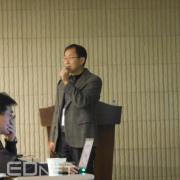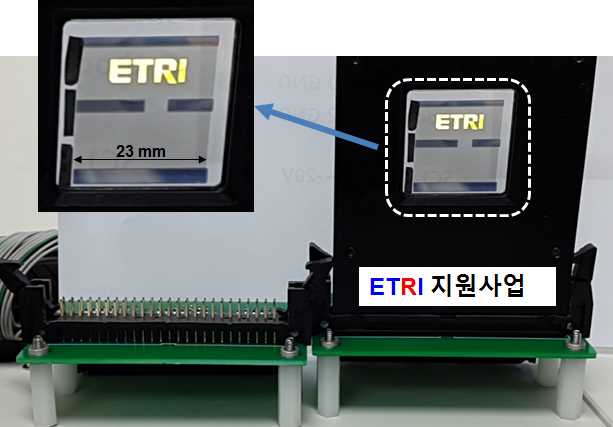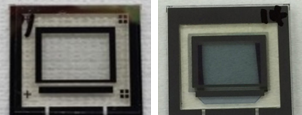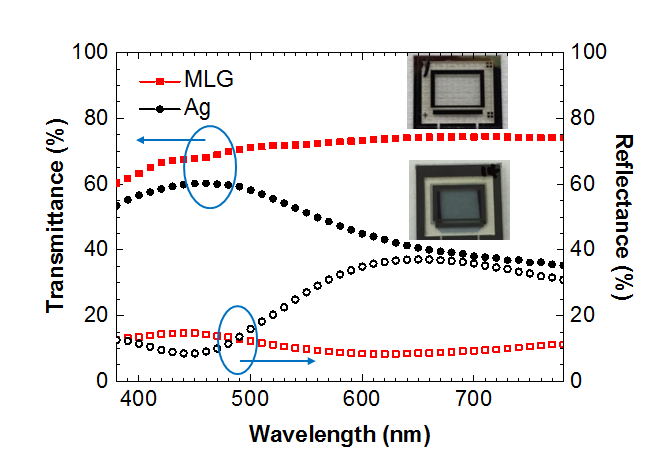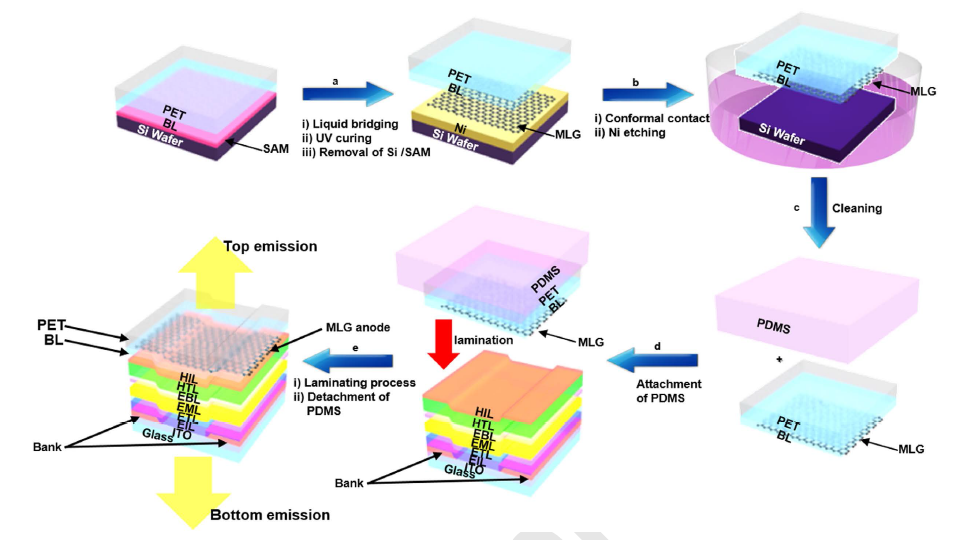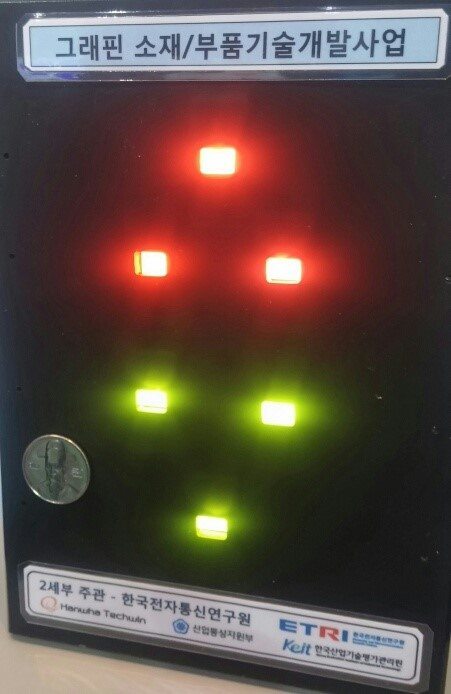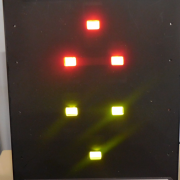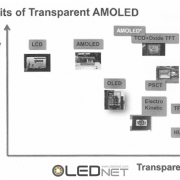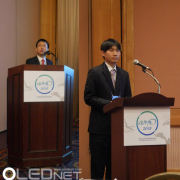Transparent Electrode Needs Development for Next Generation Display to Surge
Recently, with various research results regarding transparent electrode, interest in next generation transparent electrode is increasing.
In early December, UNIST (Ulsan National Institute of Science and Technology) developed printing technology that can arrange the Ag nanowire in the direction chosen on top of substrate. Ag nanowire is transparent electrode that can be applied to large area flexible touch panel and display products. This technology allows the surface to be flat through the fusion of nanotechnology to the existing printing process and increases transmittance.
Around the same time, ETRI (Electronics and Telecommunications Research Institute) developed technology that replaces thin metal electrode on top of OLED substrate with graphene transparent electrode. The metal electrode that were being used in OLED was mostly silver (Ag) material, but due to the reflection of internal light, the viewing angle changed depending on the angle. The external light also affected picture quality due to reflection. The newly developed technology used graphene that mostly does not reflect internal/external light as transparent electrode and improved transmittance and picture quality.
At present, ITO (indium tin oxide) is most widely used as transparent electrode materials. However, the supply is limited and flexible electronic device application is narrow. As such, the demand for the development of new materials that can replace this is greatly increasing. Particularly, as ITO is not suitable for stretchable device, the next generation transparent electrode development is considered to be a key issue for future display.
At 2016 Production/Process Technology Development and Application Cases by Flexible Transparent Electrode and Film Materials Seminar (December 17) held in Seoul, South Korea, Dr. Won Mok Kim of KIST (Korea Institute of Science and Technology) discussed, of many flexible transparent electrodes, TCO (transparent conductive oxide) production and process technology through presentation titled ‘TCO based flexible transparent electrode production and process technology development trend and applications’.
Of the transparent conductive materials, oxides have been researched the longest, and they are most widely used transparent conductive materials. Oxide including conductive materials have optical band gap of ≥3.0 eV and therefore has high transmittance and can be flexible. Kim revealed that TCO needs further improvement in conductivity and transmittance for display application.
Regarding transparent body, when refractive indexes of components are different, the path of light through the transparent body is refracted. When this occurs, the object becomes hazy although transparent. Haze is quantified and used to assess the transparent body’s performance. Kim explained that for solar cell the haze is purposefully increased to transmit more light to the internal active materials. However, if the display is clouded the clarity of image is reduced and therefore haze has to be lowered. To achieve this, Kim reported that the TCO’s surface roughness has to be reduced.
Kim revealed that there are two issues, temperature and flexibility, when TCO is used as transparent electrode. ITO’s conductivity is highest at 300 ℃, and for ZnO it is around 200 ℃. Channel cracks could occur with TCO when higher than bending strain is applied, and the crack could snap when it is bent further, destroying the device performance. Kim explained that to increase the bending strain, the thickness has to be reduced. However, when doing so as the sheet tension increases, the process has to be designed carefully considering the tradeoff.
Transparent electrode could be applied to display, solar cell, touch panel, and lighting among others and therefore requires much development. Although oxides have been long researched as transparent electrode materials, Kim concluded that even more diverse value can be created through fusion with next generation materials.


